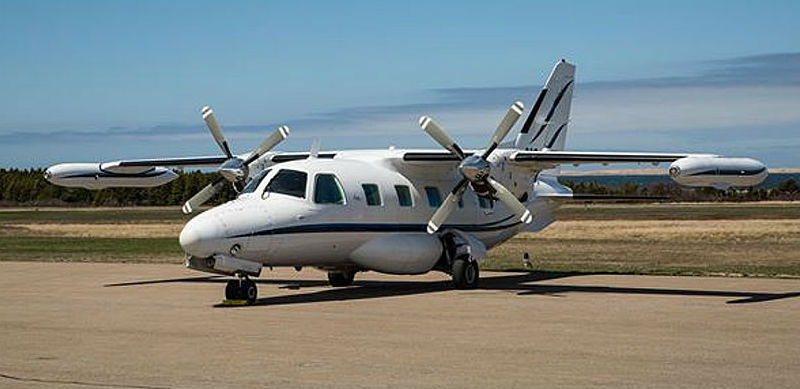Estimated reading time 4 minutes, 50 seconds.
The Transportation Safety Board of Canada (TSB) has released its final report on a fatal March 2016 accident involving a Mitsubishi MU-2 twin-engine turboprop aircraft.
In a news conference on Jan. 10, 2018, TSB chair Kathy Fox announced that an unstable approach was a major contributing factor to the MU-2’s collision with terrain southwest of its destination, the airport at Îles-de-la-Madeleine, Que. (CYGR).

The accident killed all seven people on board the aircraft, including the Honourable Jean Lapierre, former Member of Parliament, Minister and media personality.
Increased workload
With the aid of an onboard recording device, the TSB concluded that the MU-2 pilot modified his approach plan during cruise flight, delaying the aircraft’s initial descent.
“This placed the aircraft above the planned descent profile and compressed the time available for the pilot to complete the required checklist activities, while monitoring the aircraft’s airspeed, altitude and rate of descent, thereby increasing the pilot’s workload,” wrote the TSB in a press release announcing the conclusion of the investigation.
His increased workload likely prevented the pilot from considering a go-around, and the aircraft continued under the unstable approach.
“During the final moments of the flight, a loss of control occurred when the pilot rapidly added full power, at low airspeed and low altitude, which caused an aircraft upset and resulted in the aircraft sharply rolling to the right and descending rapidly. Although the pilot managed to level the wings, the aircraft was too low to recover before striking the ground,” wrote the TSB.
“The MU-2 is a high-performance aircraft [that is] challenging to fly, especially at low speed, and particularly during sudden applications of engine power,” explained Fox.
The TSB has advised that pilots should always consider a go-around when a landing approach is unstable.
In this particular incident, Fox said the MU-2 pilot’s situational awareness and judgment were impacted by the “very high” workload necessitated by reducing speed, altitude and rate of descent, completing the necessary checklist, and configuring the aircraft for landing.
Pilots are trained to follow stable-approach criteria defined by regulators, operators and aircraft manufacturers. Such procedures are designed to give them more time to monitor key elements of aircraft performance and to complete checklists before landing.
Fox also noted that a key source of information for TSB investigators was a lightweight recorder developed by the pilot and installed on board the aircraft. The device was not required by regulation. However, it provided investigators with important acceleration and GPS data as well as cockpit audio, allowing them to piece together a detailed history of the flight.
The TSB said these recorders can be useful to identify the cause of accidents, and to plan for safer flights in the future.

“Although the TSB does not endorse any single product, it would be fair to say that the lightweight recorder on this aircraft can be viewed as an indication of the way forward,” said Fox. “The benefits of lightweight recorders are obvious. . . . We can point out deficiencies and risks and communicate them to industry, the regulator, and to all Canadians.”
She said the TSB will continue to highlight the risks of continuing an unstable approach to a landing.
“We’ve seen too many of these [unstable approaches] in the past lead to tragic accidents,” Fox concluded. “That’s why unstable approaches are on our watch list.”








